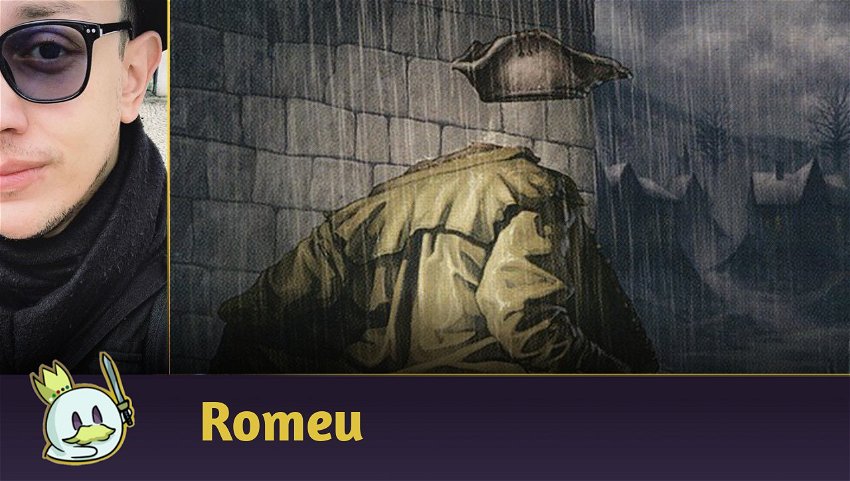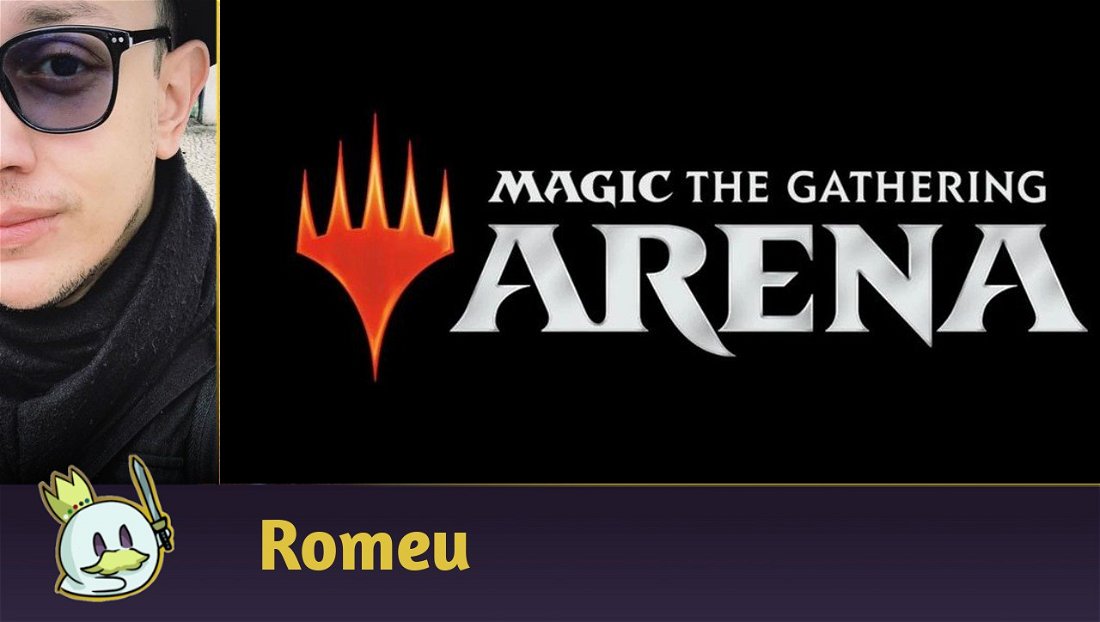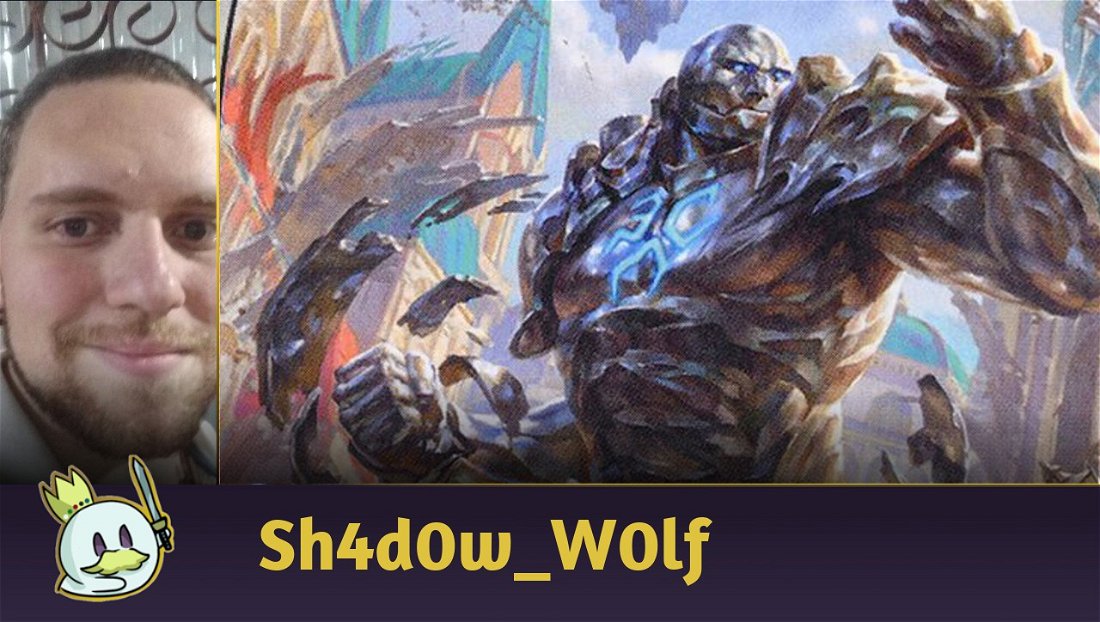Despite dividing opinions on the fun and enjoyment of games, a maxim that a significant portion of the Legacy community agrees on is that the format has been strange since Initiative became a thing.

As it happened in Pauper, the inclusion of cards with this keyword and a higher power level to Magic Online popularized the strategies that we can name today as Turbo Initiative, especially in the new Naya versions that resort to Once Upon a Time to increase the consistency with which the deck finds one of its key pieces. What the opponent will do and how they intend to play does not matter when the value accumulated by the Undercity will always be higher.
But Legacy, unlike Pauper, has the elements to try to counter Turbo Initiative, especially in the Blue-Based shell in which Izzet Delver still prevails as the best deck in the format. And in a Metagame gradually drifting between countering Delver or Initiative, considering clever methods of fighting a polarized Metagame arises - as was the case with Azorius Auras, which took the player Sprouts into the Top 8 of the Legacy Super Qualifier.
The Decklist
The above list is reminiscent of an old and almost forgotten shell for Tempo decks, in which cards like Quirion Dryad or Lord of Atlantis would team up with Curiosity, free spells, and disruption to establish a gradual and hard to interact with clock. This proposal was later dropped in favor of the Threshold shell that later formed the contemporary Delver lists.
Although many are considering the deck as a great "anti-meta answer" to deal with Initiative, a deeper search on the player's profile showed me that they have been betting occasionally on this strategy since February 2021 and, perhaps, they only found the perfect opportunity to pilot this deck into an unprepared Metagame at a major event.
As Legacy's latest contender, it's a strategy that cares exclusively about executing its own game plan rather than interacting, and if we establish a counterpoint that the opponent has a hard time dealing with, we can extract a huge advantage by stealing their Initiative every turn.

We've seen decks like Izzet Delver resort to Unchained Berserker to play against this archetype, and Invisible Stalker is the true nightmare of any strategy that wants to maintain a certain state that depends on combat because it's simply impossible to block or kill it without edict effects or sweepers - two elements that Initiative decks don't naturally resort to on their sideboards.
The creature already had its place in the sun alongside Delver of Secrets and Snapcaster Mage in Standard, back in 2012, for its ability to carry a sword or Runechanter's Pike without worry, but lost ground when Restoration Angel was released in Avacyn Restored. Since then, Invisible Stalker has never found a home in competitive formats, but now seems like a good time for it to shine in Legacy by exploring dungeons.
Maindeck

True-Name Nemesis joins Invisible Stalker as another hard-to-kill threat, and unlike Innistrad's creature, it at least sets a fast clock that pressures the opponent within a few turns.
Esper Sentinel, despite not naturally protecting itself, is a great one-turn play in a format in which players are always casting free spells, low-cost cantrips, and cheap early game removals. Its main function is to guarantee one or two extra draws while it remains in play, enough to find the other threats and the spells to enchant them.

No one would believe if someone said that a deck running a Curious Obsession and Staggering Insight playset made the Top 8 in a 290 player Legacy tournament if the results weren't published, but here we are.
The recently released Auras are very well known in Pioneer and Historic, and their proposal is to punish the opponent every turn for failing at interacting with their creatures by accumulating resources. Staggering Insight is also a solid option to slow down the race of more aggressive decks, as it grants Lifelink to the enchanted creature.
A common question when commenting on this list was why resort to eight Auras, which are potentially dead cards without a target, instead of the Stoneforge Mystic package with equipment. It's likely that the equipment core has been tested, but my personal conclusion is that this deck is mana intensive, and you want to do the most you can for as little cost as you can, and Auras, being blue, are an excellent pitch for Force of Will and Force of Negation.

To find the parts you need at the right time, the list features the classic Brainstorm and Ponder package alongside the Fetch Lands, ensuring a greater reach of each draw with your cantrips.


Speaking of classic packages, both counterspells and removals follow the usual pattern of a Blue-Based shell. Prismatic Ending is excellent in this list to deal with the things that really matter in the format today that, in most cases, cost 1 or 2 while Swords to Plowshares is the perfect option to deal with Murktide Regent and other troublesome creatures.
With three copies of Prismatic Ending and one of Force of Negation with another on the sideboard, would it be possible to assume that the removal was skipped in favor of gaining access to yet another free spell in the maindeck?

Despite its Tempo proposition, Azorius Auras are relatively greedy with their costs and need to play around Wasteland or Daze to cast their main threats. Therefore, most of its lands are devoted to securing a decent number of colors while interacting with cantrips, forgoing a Wasteland playset.
A highlight of the list is the lone copy of Volcanic Island to gain access to red - a proposal that has been replicated in other archetypes to gain access to important cards on the Sideboard, such as Pyroblast, End the Festivities and Meltdown.
Sideboard

Starting the Sideboard with the splash to red, Pyroblast became so essential in Legacy to counter Delver and other Blue-Based that it even gained maindeck space on some lists before the rise of Initiative archetypes. Here, it plays a primary role as an efficient counter against a large chunk of the format, killing Murktide Regent, Uro, Titan of Nature's Wrath, Teferi, Time Raveler and others, countering a Force of Will on a key card, etc.
End the Festivities is a decent answer against several small threats present in various decks: Delver, Elves, the tokens created by Sai, Master Thopterist, Third Path Iconoclast, among other cards that appear at inopportune times.
Finally, Meltdown became a staple after the rise of 8-Cast in early 2022. Today, its use is further amplified thanks to the popularity of Chalice of the Void, Mox Diamond and/or Chrome Mox, in addition to increasing lists with the Painter's Servant and Grindstone combo, and dealing with Urza's Saga tokens.

Hydroblast has always been overshadowed by its red brother, but has been gaining space on Sideboards due to the addition of Mono Red Painter decks, in addition to being a clean answer to Minsc & Boo, Timeless Heroes, Expressive Iteration and, mainly, being the best one mana counter against Pyroblast.
Surgical Extraction is the format's default means to answer one-off combos and also to force Reanimator to play around the mere possibility that you have a copy of it in your hand. Thus, an archetype that already has difficulties with cheap disruption if it doesn't go off in the first turn will have yet another possibility to consider.

The rest of the sideboard is made up of various unusual one-ofs, such as Rest in Peace to permanently lock in graveyard strategies; or Torpor Orb as another element to counter Initiative decks; Stony Silence which manages to practically paralyze some artifact-oriented strategies; and Force of Negation as an additional protection and free spell.
Finally, we have Armageddon, which is quite interesting because, despite its high cost, the games in which it could really matter are the ones in which the player doesn't have to worry about counterspells and the games actually tend to stretch too much, and there are indeed some archetypes in Legacy that have serious difficulties getting back into the game if they have all their lands destroyed.
Deck Analysis
The Azorius Auras is a unique take compared to what we've seen in Legacy over the past decade. Unlike Modern, decks like Bogles have never succeeded in the format because of how fragile that strategy tends to be against cheap disruptions, but the format's momentum seems to favor the archetype because of the benefits Undercity offers on its own: a walk through the dungeon following Forge and Trap! is enough to turn Invisible Stalker into a respectable clock in just two turns.
This allows the deck to dedicate slots with essential interactions and removals of the format without losing so much speed, since, in a usual game, Stalker will hardly attack with more than two power as long as the opponent keeps interacting with your spells, which is a laughable pressure when compared to Murktide Regent or against a deck that is looking at any cost to get a Marit Lage token into play.
This doesn't mean that Auras are bad outside matchups against Initiative, on the contrary, due to the difficulty of interacting with threats once they are in play and the high number of methods to delay and/or deal with the opponent's plans, the deck manages to behave very well on its own against several games, but its reliance on enchantments to establish pressure and the low density of creatures are worrying since it gives too much space for the opponent to get back to the game and/or too much time to close a combo.
Finally, another point that gave me problems with the list is the ease with which other archetypes manage to play over the deck and/or bury it with value: its game plan is basically to try to build its own Uro, Titan of Nature's Wrath, so any archetype that runs Uro itself besides Jace, the Mind Sculptor and others, or decks that cast giant bombs like 12-Post can just ignore what we're doing because, in the late-game, they will have the advantage if we aren't fast enough.
My conclusion is that Azorius Auras is a good meta call due to the rise of Initiative and because it manages to behave relatively well against Delver if you can handle their pressure and enchant your creature at least once, and the amount of interaction turns it into a reasonable option against a variety of other less important matches. However, it has some inherent vulnerabilities due to the need to dedicate slots for dead cards, in addition to opening up too much space to play over it and not establishing enough pressure to force certain archetypes to race it.
Its appearance in the Top 8 of the Legacy Super Qualifier opens the possibility for a collective refinement of the decklist, allowing it to become popular in the coming weeks due to the current state of Legacy.
Conclusion
That's all for today.
These articles typically accompany a Sideboard Guide. However, the truth is that I haven't had enough time piloting the deck this week to put together a guide that is concise with my beliefs and experience regarding matchups, and I'd rather refrain from presenting a guide instead of just following a recipe and basic idea of how I would behave in hypothetical scenarios.
So, I'll leave it up to you: how would you sideboard with the Azorius Auras? Which cards do you consider essential to how it works, and what changes do you think would benefit it?
Thanks for reading!














— commentaires 0
, Réactions 1
Soyez le premier à commenter